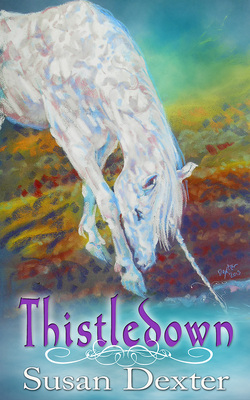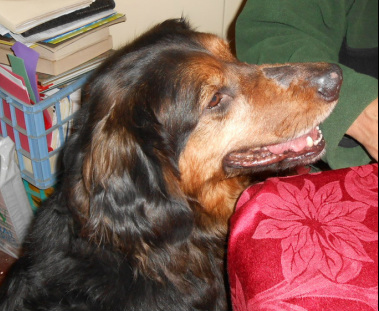
 Just in time for Confluence, Thistledown is now available in trade paperback. Teddi Black did an amazing job of transforming the e-book cover into a front and back, still featuring my pastel painting of a unicorn. I will at least have proof copies at the convention, but I stand in awe of the leap forward in technology that allowed me to have the book in my hand nine days after I uploaded the interior file to Createspace.
1 Comment
Do Indie-Authors suffer from inferiority complexes? I’ve been following forums on KDP Voice of the Author and Goodreads for a bit now, and I’ve noticed some common “threads” if you can bear the play on words. Schemes to get your self-published book noticed. Begging for reviews. Moaning about one-star reviews. Sites to promote your self-published book. Ways to trade reviews or move books up on “lists”. Do I need a new cover/book description/agent/blog? Requests for recommendations of overlooked self-published works. Cheek by jowl: I need reviews to become a bestseller/someone is rating my books unfairly, how can I make them stop?
Here’s my question: If you present your work professionally (and that means well-edited and properly formatted) when exactly does the customer in the Kindle Store tumble to the fact that your book is self-published? You have to scroll down really far, well below the book description to find the publisher data. Do readers do that? Or do they just go to the Look Inside, then make their choice about purchasing? I looked at a couple of pages of an Amazon Search for “Epic Fantasy”, as a test, and I really couldn’t tell unless I clicked on an individual book and looked inside it. There’s no cover blurb that screams “Self-Published”. If we can remember that we are Indie Authors and Indie Publishers, and do all aspects of both jobs with equal attention, if we make our writing the best it can be, and don’t rush a project into print too soon, we are more likely to have a decent product to promote—and no reason to apologetically refer to our books as anything other than…books! And then the readers, the sales, the reviews will come. But the writing comes first! Your book title won’t fit on your cover.
You have 20 pages of thank-yous, author notes and a prologue at the front of your book. Your text isn’t justified. You don’t know what “justified” means. You double space between paragraphs. Your indents are two inches wide. You back cover copy has to be set in 8 point italic condensed type to fit on the page. Want to look like a pro? Look at other books. There are millions out there, in stores, libraries, and if you’re me, all over the house. If you create in an unnecessary vacuum, resign yourself to reinventing the wheel. And an afterward about book titles: this is part of marketing, and major publishers have never had any trouble changing an author’s working title to something they feel works better for their line. When I did my experiment to see if I could tell whether books were self-published, it was the titles that gave them away, not the covers. Titles are not copyrightable, but you’d still be nuts to call your novel Gone With the Wind unless you’re a meteorologist and it’s your autobiography. Do a search to see if there are other books with similar titles—you don’t want your work to get lost, or be confused with another book. I went back to the original title for Moonshine, because there were lots of books called Moonlight besides mine, but no other fiction with Moonshine in the title. That title/subtitle that won’t fit on your cover? Folks, this is a bit like registering a baby thoroughbred with the Jockey Club. Which sounds like a quality horse? Secretariat, or Suzy Q’s Fuzzy Princess? Unbridled or Makemesomebigbucks5starreviews? Naming your book is an art, like naming your characters. It’s worth your time and consideration, and it’s not entirely the author’s preference—it’s part of your marketing, your book’s identity, your branding. Goodbye, Ozzy
It’s the price of unconditional love. We can’t have it for more than a few years. Not quite eleven, not till some time in August. The year I lost my first horse, before I got my cat, a friend and I lured Oz out of a creekside garbage dump where he’d been stashed, strayed or abandoned in a choke collar so tiny it had to be cut off of him. He was a big puppy. He got bigger. But his easygoing temperament never changed. He was happy living among the old paint cans and cement slabs. He was happy to be in a house. He loved kids and dogs and cats and food of all kinds. At 8 PM he’d go upstairs to bed, whatever house he happened to be at. He was always smiling. Retrievers are called by their color—Golden—or where they come from—Chesapeake, Labrador. Oz was the world’s one and only Neshannock Creek Retriever, and our family dog. He lived with me from the August rescue until he went to my brother’s house in January. He came back to me whenever my brother was away, and he spent a lot of time with my mom and sister. When Mom broke her hip, he visited her at the hospital, with all and sundry pretending not to see a hundred-plus pounds of happy dog strolling by. Ozzy went with me to Light-Up Night downtown, unfazed by fire trucks blaring sirens and marching bands and fireworks. Search & Rescue wanted to recruit him, that night. The next year, he met the mayor at the parade. (The mayor was impressed by his size. Oz was just Oz.) Oz, it wasn’t long enough, and we were blessed to have you. Good Boy! |
AuthorWriter of epic fantasy with a wry twist. Fond of horses, dogs, cats, canaries, falcons and draft cider. Dedicated multi-tasker, I also paint with chalk pastels. Archives
January 2024
Categories
All
|

 RSS Feed
RSS Feed